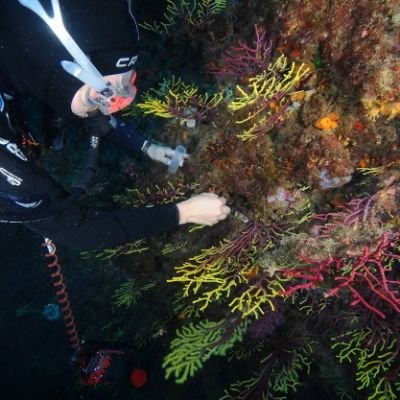
Blanca Figuerola@BlancaFiguerola
Nov 25, 2022
11 tweets
CO2 emissions are changing the oceans, causing an increase in seawater temperature & changes in ocean chemistry.But how is affecting to marine calcifiers, which build carbonate skeletons?A thread about our work published in @Ecography! @Huw Griffiths onlinelibrary.wiley.com/doi/10.1111/ec
When the oceans absorb CO2, they acidify, a phenomenon known as ocean acidification. At the
same time, it reduces the concentration of carbonate in seawater. (1/10) Infographic by @Stacey McCormack
The acidic waters and fewer carbonate ions available make it harder for marine calcifiers to
build their skeletons. Their skeletons can be even more soluble in more acidic waters when incorporate magnesium (Mg) and thus being more vulnerable to acidification!(2/10) @Stacey McCormack
Our work focuses on marine calcifiers from around Antarctica in the Southern Ocean. This is
because colder waters of the polar regions contain more CO2 and thus are predicted to be among
the first and most highly affected regions by ocean acidification. (3/10)
We used tiny invertebrates called bryozoans. Like corals, they can live in colonies and build carbonate skeletons, but they are more widely distributed & important carbonate producers in the Southern Hemiphere, making them great animals to study global change effects. (4/10)
We identified the different types of minerals found in Antarctic bryozoan skeletons, creating the
largest dataset for Southern Ocean bryozoans ever produced. You can have access to the dataset here as it's open for anyone: (5/10) #openaccess
Then, we included these mineral signatures with existing data from about 500 species and compared the distribution of the different mineral types and Mg levels in their skeletons with the temperature of the seawater that they lived in. (6/10)
We found a clear pattern showing that species that have carbonate skeletons with high Mg
content (HMC) become more common with warmer seawater temperatures, and we saw this trend on a global scale. (7/10)
This suggests that many calcifiers with HMC skeletons will become more vulnerable to acidification as seawater temperatures rise. Given the rapid changes observed and predicted in the ocean temperature and chemistry, they may not have time to adapt to these new conditions. (8/10)
However, it is still unknown to what extent calcifying species are able to adjust their skeletal chemistry in response to the combination of these (temperature and pH) and other global related stressors. (9/10)
The scale of the study was possible thanks to the significant efforts of members of the International Bryozoology Association @International Bryozoology Association to increase data on skeletal mineralogy in a wide range of bryozoan species from poles to tropics. (10/10)

Blanca Figuerola
@BlancaFiguerola
Beatriu de Pinós-Marie Curie @MSCActions researcher at @Med_Recover @ICMCSIC. Global change/benthic ecology/paleoecology 🇦🇶 #marinecalcifiers #Bryozoa
Missing some tweets in this thread? Or failed to load images or videos? You can try to .









